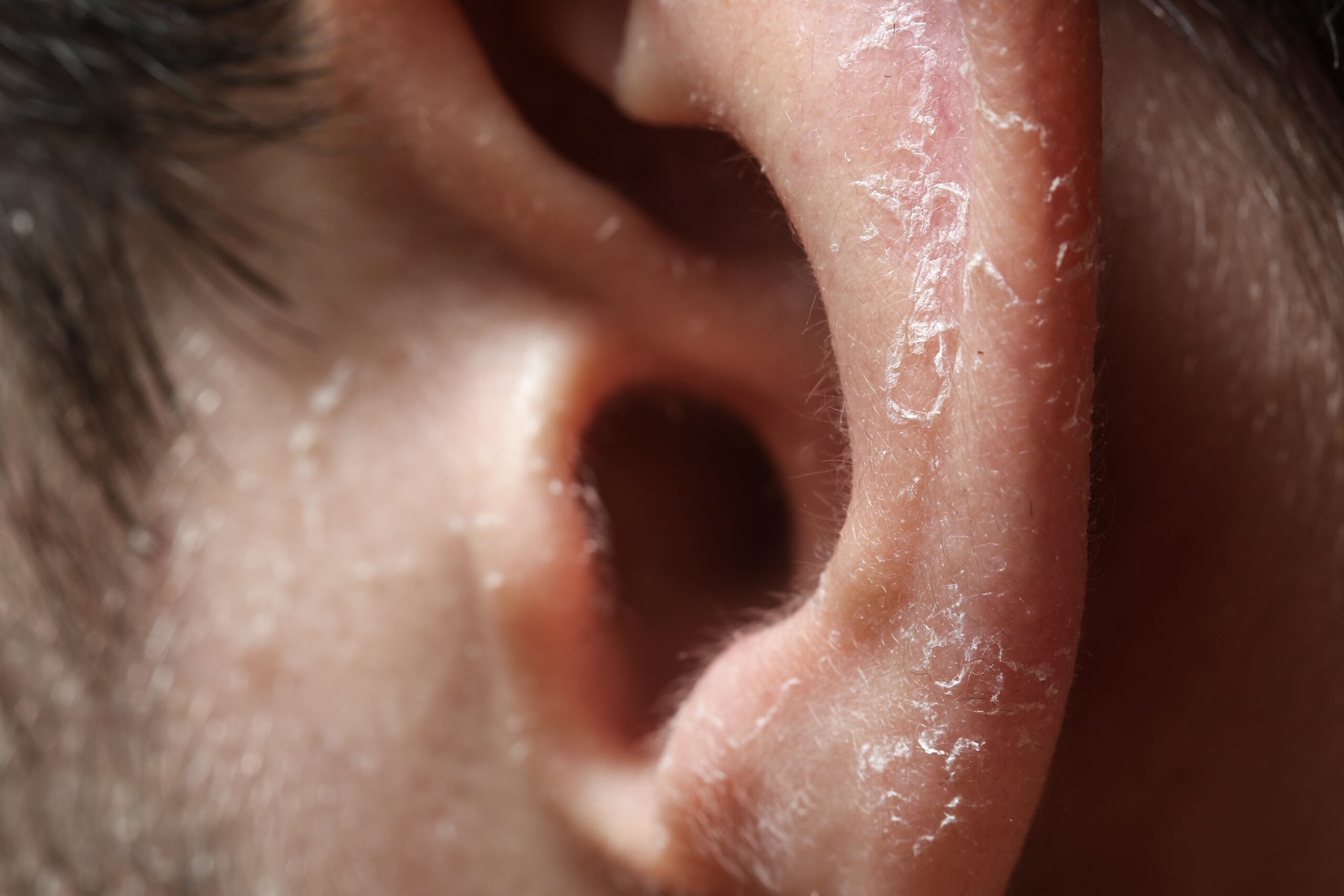- Chris Comans
- 0 Comments
When most people think about sun protection, they picture their face, shoulders, arms, and legs. Yet one area is often overlooked — the ears. In Western Australia, where the sun is intense and ultraviolet (UV) levels are some of the highest in the world, the ears are a prime target for sun damage. Over time, this damage can lead to skin cancers, particularly non-melanoma skin cancers such as basal cell carcinoma (BCC) aThe Ears: A Hidden Hotspot for Skin Cancer in Western Australiand squamous cell carcinoma (SCC).
As a Dermal Clinician and Skin Cancer Screening Practitioner, I see first-hand how easily ear lesions can be missed during self-checks, and how important early detection is in preventing complications.
Why the Ears Are at Risk
The ears are exposed to the sun almost every day, especially in a climate like ours. Whether you’re driving, gardening, fishing, or walking along the coast, the ears are rarely covered. Hats often don’t shade them fully, and sunscreen can be forgotten or rubbed off.
The skin on the ears is thin and lies close to cartilage, meaning UV damage can penetrate deeper, more quickly. This increases the risk of skin cancers developing and makes them more likely to spread to surrounding tissue if left untreated.
Non-Melanoma Skin Cancers on the Ears
Basal Cell Carcinoma (BCC)
- The most common type of skin cancer on the ears.
- Usually appears as a pearly lump, scaly patch, or a sore that doesn’t heal.
- BCCs on the ears can be more aggressive than those on other areas and may require more extensive treatment if detected late.
Squamous Cell Carcinoma (SCC)
- The second most common skin cancer found on the ears.
- Often appears as a thickened, scaly spot, sometimes tender or crusted.
- SCCs can be more dangerous than BCCs because they have a higher chance of spreading if not addressed early.
Signs to Look For
The earlier a suspicious spot is found, the better the outcome. Warning signs on the ears include:
- A sore or ulcer that doesn’t heal within a few weeks.
- A scaly or crusty patch that bleeds easily.
- A lump that is growing or feels firm to the touch.
- Changes in colour or texture of an existing spot.
It’s also important to note that skin cancers can develop on any part of the ear — the rim, the lobe, behind the ear, and even inside the outer canal.
The Harsh WA Sun and UV Exposure
Western Australia’s UV levels are consistently high, even on overcast days. Our lifestyle often involves outdoor activities, and this, combined with our climate, creates the perfect conditions for cumulative sun damage over a lifetime.
The ears, like the nose and scalp, receive more UV radiation than many other areas of the body simply because of their exposure. For people who have worked outdoors or enjoyed years of beach trips, fishing, or boating, the ears may already have decades of unprotected sun exposure.
Why Screening Matters
Regular skin checks are essential in catching changes early. Many people are surprised to learn they have sun damage or early-stage skin cancers on their ears because they’ve never experienced symptoms.
In my role as a Dermal Clinician and Skin Cancer Screening Practitioner, I perform comprehensive head-to-toe screenings that include often-missed areas like the ears, scalp, eyelids, and behind the neck. By examining the skin closely, I can identify suspicious lesions and recommend the next steps before they become more serious.
What to Expect in a Skin Check with Me
Detailed Examination
Every skin check I perform includes the ears, behind the ears, and the surrounding scalp area.
Dermatoscopic Assessment
I use a dermatoscope to view skin structures in detail, allowing for the detection of subtle changes not visible to the naked eye.
Personalised Advice
After the screening, I’ll discuss any findings and provide tailored recommendations for prevention and monitoring.
Peace of Mind
Many clients leave reassured, knowing they’ve had a thorough, professional check.
Protecting Your Ears from Sun Damage
Prevention remains your best defence. Here are a few ways to protect your ears:
- Apply sunscreen generously to the ears — including the tops, behind, and lobes — every day you’re outside.
- Wear a broad-brimmed hat that shades the ears completely.
- Use sunglasses with wide arms to block more UV.
- Check your ears regularly in the mirror or ask someone you trust to look for changes.
When Was Your Last Skin Check?
If it’s been more than a year since your last skin check — or if you’ve never had one — now is the perfect time to book. The ears are small, but the risks are significant, especially under the Western Australian sun. Early detection can make all the difference.
I welcome referrals and self-bookings for comprehensive skin cancer screenings. As a Dermal Clinician with extensive experience in detecting non-melanoma skin cancers, I can help ensure nothing is missed — even in those often-overlooked spots like the ears.
Christine Comans
Dermal Clinician & Skin Cancer Screening Practitioner
Based in Subiaco, WA | Servicing metropolitan and regional areas
www.skinchx.com.au
